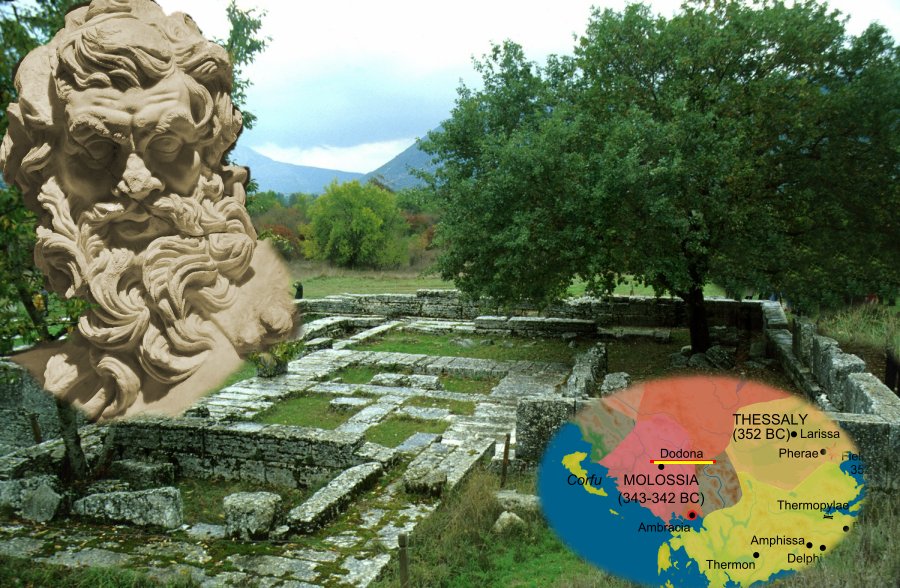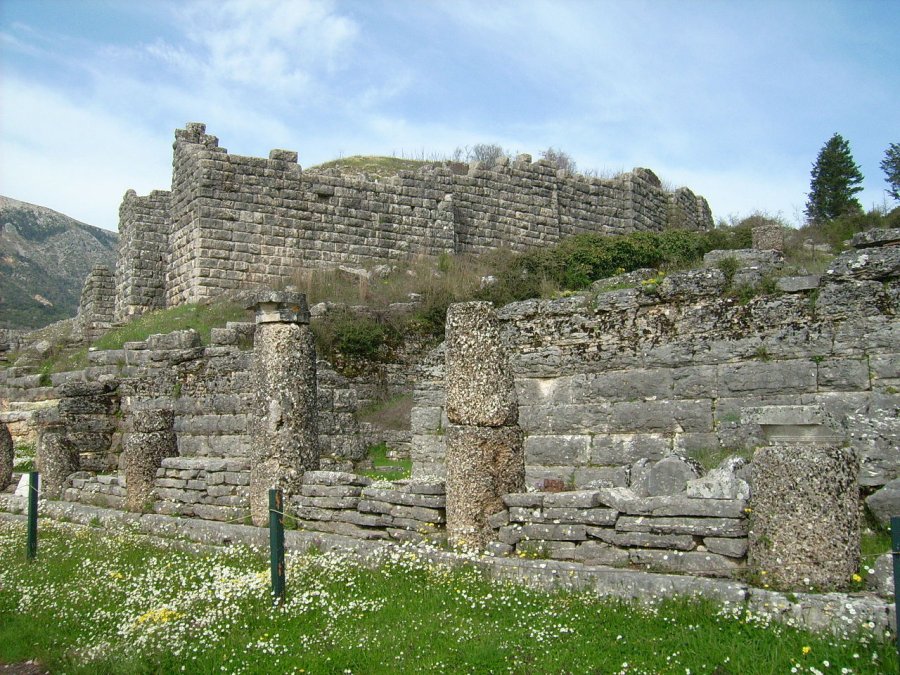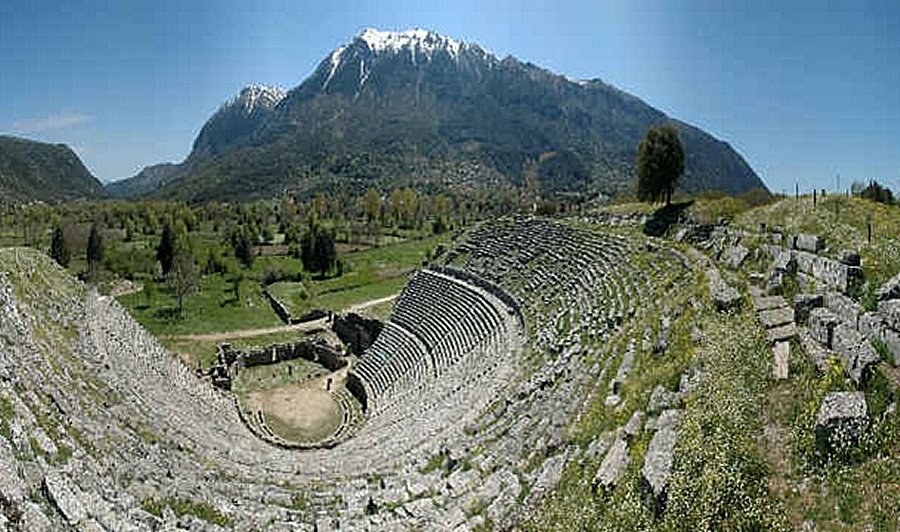Oldest Greek Oracle At Dodona And Zeus Sacred Oak Tree – Where Oracle of Dodona: Sacred Place Where Gods Spoke To Humans For The First Time
A. Sutherland - AncientPages.com - Dodona (Greek Dōdōnē) was an ancient Greek town located in Epirus; the historical region now shared between Greece and Albania.
Dodona was also the ancient seat of the oracle of Zeus, and Dione, Aphrodite's mother - honored as the wife of Zeus instead of Hera.
The shrine of Dodona was probably the oldest Greek oracle, dating to the second millennium BC, according to the Greek historian Herodotus. It was the place of several impressive ceremonies.
The earliest mention of Dodona is in the Iliad's Book XVI, where its priests, called by Homer the Selloi (or Helloi), made predictions from the rustling of the sacred oak leaves and other sounds. Herodotus, but no earlier writer, mentions priestesses, the givers of the oracles, undoubtedly under some guidance from the god.
In early times, Dodona was the most famous and respected among the oracles, where signs gave the prophecy.
Later, oracles were taken at Dodona from lots and the ringing of an iron basin. In front of this basin was an iron statue of a boy standing with a whip formed of three chains, from which some buttons hung which touched the basin. If the whip moved in the breeze, the buttons sounded against the basin.
Oracle of Zeus at Dodona. Image credit: Marcus Cyron- CC BY-SA 3.0
According to a new interpretation, the oracular sound originated from bronze objects hanging from oak branches and sounding similar to a 'wind-chime, a percussion-like instrument constructed from suspended tubes, rods, bells, or other things, usually made of metal or wood.
Dodona oracle was usually used to settle more private matters regarding marriage, children, or theft, and it was famous but relatively inaccessible. Delphi later replaced the site. However, Dodona never lost its reputation, and the states of Athens and Sparta still consulted it.
It existed in the 2nd century AD and did not seem to have disappeared before the 4th.
There are several archaeological remains at the ancient site of Dodona. Still, perhaps the most representative among the ruins is Dodona's old theatre, which had a capacity of 18,000 and had 55 rows of seats divided into three horizontal sections separated by ten steps.
Panorama of the theater of Dodona, the modern village Dodoni, and the snow-capped Mount Tomaros are visible in the background. Image credit: Onno Zweers - CC BY-SA 3.0
Dodona's theatre was one of the largest in Greece, with its 130 m diameter and dated from the 3rd BC. It was built by Pyrrhus (319-272 BC), the king of Epirus, a Greek general and statesman of the Hellenistic period, who was one of the fiercest opponents of Rome.
The cult and oracle at Dodona remained until 391 AD; later, it ceased to exist as a pagan site. The sacred oak tree was cut down. In the 5th-6th century, a Christian Basilica was built in Dodona, and the place became the bishop's seat.
Following the Slav invasion in the 6th century AD destroyed Dodona site that was abandoned.
Written by – A. Sutherland AncientPages.com Staff Writer
Updated on October 20, 2022
Copyright © AncientPages.com All rights reserved. This material may not be published, broadcast, rewritten or redistributed in whole or part without the express written permission of AncientPages.com
More From Ancient Pages
-
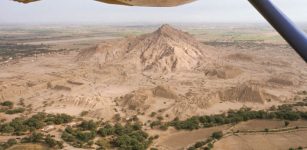 Scientists Caution Against Over-Interpreting Influence Of Climate On Cultural Change And Catastrophe
Archaeology | Aug 18, 2022
Scientists Caution Against Over-Interpreting Influence Of Climate On Cultural Change And Catastrophe
Archaeology | Aug 18, 2022 -
 Waru Waru – Ancient Andean Irrigation System Brought Back To Life
Ancient History Facts | Apr 28, 2018
Waru Waru – Ancient Andean Irrigation System Brought Back To Life
Ancient History Facts | Apr 28, 2018 -
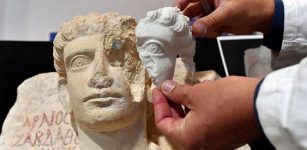 Two Rare Funerary Busts Rescued From Destruction In Palmyra – Restored In Italy
Archaeology | Feb 25, 2017
Two Rare Funerary Busts Rescued From Destruction In Palmyra – Restored In Italy
Archaeology | Feb 25, 2017 -
 Two Knights, One Horse − How A Legendary Knights Templar Symbol Has Puzzled And Fascinated Since The Middle Ages
Featured Stories | Jun 3, 2024
Two Knights, One Horse − How A Legendary Knights Templar Symbol Has Puzzled And Fascinated Since The Middle Ages
Featured Stories | Jun 3, 2024 -
 Unas (Unis): First Pharaoh Who Decorated His Burial Chamber With Pyramid Texts
Featured Stories | Jun 3, 2021
Unas (Unis): First Pharaoh Who Decorated His Burial Chamber With Pyramid Texts
Featured Stories | Jun 3, 2021 -
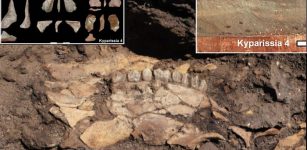 Greek Discovery Of Stone Tools In Megalopolis Area Pushes Back Greece’s Archaeological Record Up To 250,000 Years
Archaeology | Jun 2, 2023
Greek Discovery Of Stone Tools In Megalopolis Area Pushes Back Greece’s Archaeological Record Up To 250,000 Years
Archaeology | Jun 2, 2023 -
 Dramatic Story Of Charlotte Corday And The Assassination Of Marat – Was She A Coldblooded Murderess Or Courageous Female Hero?
Featured Stories | Mar 11, 2025
Dramatic Story Of Charlotte Corday And The Assassination Of Marat – Was She A Coldblooded Murderess Or Courageous Female Hero?
Featured Stories | Mar 11, 2025 -
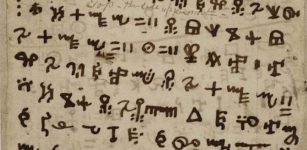 Vai Script – Rare African Manuscript Offers Clues Into How Writing Evolved
Archaeology | Jan 11, 2022
Vai Script – Rare African Manuscript Offers Clues Into How Writing Evolved
Archaeology | Jan 11, 2022 -
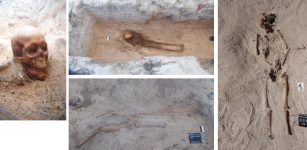 Silent Witnesses: Further Dark Secrets Of Batavia Shipwreck – Uncovered
Archaeology | May 11, 2023
Silent Witnesses: Further Dark Secrets Of Batavia Shipwreck – Uncovered
Archaeology | May 11, 2023 -
 Echo And Narcissus: Cursed Ability To Speak And Punishment Of Selfish Love And Vanity
Featured Stories | Feb 9, 2021
Echo And Narcissus: Cursed Ability To Speak And Punishment Of Selfish Love And Vanity
Featured Stories | Feb 9, 2021 -
 Njord: Norse God Of The Seas And Seafarers And His Unhappy Marriage To Skadi
Featured Stories | Jul 10, 2018
Njord: Norse God Of The Seas And Seafarers And His Unhappy Marriage To Skadi
Featured Stories | Jul 10, 2018 -
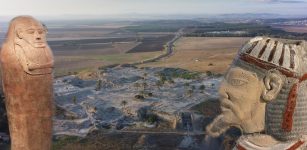 Ancient Mystery Of The Biblical Canaanites – New DNA Insight
Archaeology | May 28, 2020
Ancient Mystery Of The Biblical Canaanites – New DNA Insight
Archaeology | May 28, 2020 -
 Medici Family – Powerful Renaissance Godfathers And Patrons Of Galileo Galilei
Featured Stories | Dec 17, 2018
Medici Family – Powerful Renaissance Godfathers And Patrons Of Galileo Galilei
Featured Stories | Dec 17, 2018 -
 Fascinating Medieval Knight Armor History
Featured Stories | Oct 23, 2018
Fascinating Medieval Knight Armor History
Featured Stories | Oct 23, 2018 -
 Lost Viking Village Borgund And Its 45,000 Artifacts Hidden In A Basement Examined By Experts
Archaeology | Apr 22, 2022
Lost Viking Village Borgund And Its 45,000 Artifacts Hidden In A Basement Examined By Experts
Archaeology | Apr 22, 2022 -
 How Was The Mysterious Menga Dolmen Built By Neolithic People? New Scientific Theory Presented
Archaeology | Aug 28, 2024
How Was The Mysterious Menga Dolmen Built By Neolithic People? New Scientific Theory Presented
Archaeology | Aug 28, 2024 -
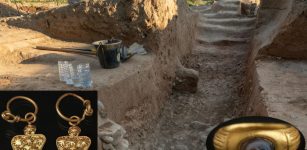 Magnificent Etruscan Underground Burial With Beautiful Artifacts Discovered In Aleria-Lamajone, France
Archaeology | May 13, 2022
Magnificent Etruscan Underground Burial With Beautiful Artifacts Discovered In Aleria-Lamajone, France
Archaeology | May 13, 2022 -
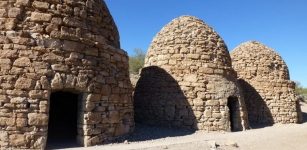 Arizona’s Enigmatic Beehive-Shaped Stone Coke Ovens
Featured Stories | Jul 15, 2023
Arizona’s Enigmatic Beehive-Shaped Stone Coke Ovens
Featured Stories | Jul 15, 2023 -
 Was 4,000-Year-Old Seahenge In Norfolk Built To Battle Climate Change?
Archaeology | May 31, 2024
Was 4,000-Year-Old Seahenge In Norfolk Built To Battle Climate Change?
Archaeology | May 31, 2024 -
 Legendary Brahan Seer Of The Clan Mackenzie (Coinneach) – The Scottish Nostradamus
Featured Stories | Jan 21, 2025
Legendary Brahan Seer Of The Clan Mackenzie (Coinneach) – The Scottish Nostradamus
Featured Stories | Jan 21, 2025

